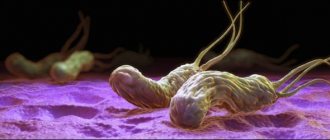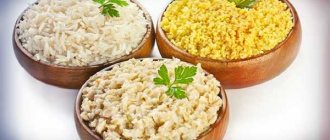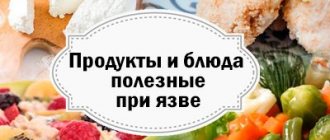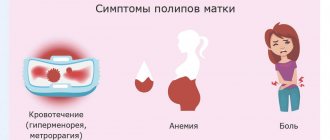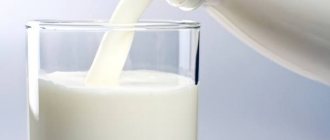Siegbert Rossol, gastroenterologist, specialist in internal medicine
Since 2006, he has held the post of chief physician at the Nordwest Medical Clinic.
Read more about the specialist →
Gastric cancer remains one of the most common cancers. The main treatment method for stomach tumors in Germany is surgery - partial or complete removal of the organ, which is associated with the occurrence of certain problems in the patient’s diet.
source: ©pexels.com
Dietary recommendations after gastric removal
Tips after gastric removal:
- eat frequently (6-7 times a day)
- small portions;
- include healthy foods in your diet
- Avoid products that:
- irritate the gastrointestinal tract tissue;
- promote increased gas formation;
- lead to a feeling of heaviness;
- cause dumping syndrome;
- adhere to the rules of a balanced diet;
- monitor the amount of proteins, fats, carbohydrates, vitamins and microelements you receive.
Treatment
Is there a cure for stomach cancer? - Yes. The success of therapy varies; the stage of the disease is of paramount importance. Surgery is the only way to effectively treat the disease.
Stage 1
The tumor can grow to the muscle layer and have 1-2 metastases in regional nodes. The type of surgery depends on the location of the cancerous node.
Can be used:
- subtotal gastrectomy;
- gastrectomy - the stomach is completely removed.
The volume of lymph node dissection (removal of lymph nodes) depends on the number of metastases identified and the location of the tumor. Endoscopic intervention helps only in the early stages of the process, when the cancer cell is within the mucous membrane. Such an operation for stomach cancer in Moscow is performed quite quickly and is called endoscopic mucosal resection or endoscopic submucosal dissection (depending on the depth of the lesion). Surgery for stomach cancer can vary in cost, depending on several factors.
Stage 2
The tumor grows into the muscle layer. Metastasis in lymph nodes - up to 7. The operation of choice for treating stage 2 stomach cancer: gastrectomy with lymph node dissection. Depending on the involvement of neighboring organs (pancreas, liver, intestines, diaphragm, etc.), their resection or complete removal is performed.
Stomach cancer stage 2 photo during gastroscopy
Treatment of stages 1-2 (according to indications) is possible using a laser. Laser tumor destruction is indicated in the initial stages of cancer. Or inoperable patients with small tumors after the administration of a specific macrodrug. The method is called Photodynamic Therapy (PDT).
Stage 3
The type of treatment for stomach cancer is surgery, as in stage 2 and depending on the involvement of nearby organs (pancreas, liver, intestines, diaphragm, etc.), their resection or complete removal is performed.
Stage 4
Stage 4 gastric cancer in Russia, unfortunately, is diagnosed in many patients newly diagnosed. A tumor at this stage of gastric cancer can have any size and number of regional metastases. Its difference from a stage 3 neoplasm is the presence of distant metastases - from 1 or more. It is possible to carry out both radical and palliative operations (to reduce intense pain, obstruction, reduce the number of tumor cells and intoxication of the body).
Removal of the stomach for cancer, life expectancy (or in professional language - five-year survival rate) directly depends on the stage of the tumor and the number of metastases. This makes stomach cancer and its survival prognosis similar to other cancers. Untreated cases of the disease and the patient’s refusal of intensive treatment greatly shorten his life span and make the last stage of life more painful.
Sleeve gastrectomy - photo
How long do they live with stomach cancer without surgery and is it possible to cure stomach cancer?
There is no standard answer - everything again depends on the type of tumor. The lower the stage of cancer, the higher the patient's 5-year survival prognosis. For example, at stage 1 after treatment the indicator is more than 80%, and at stage 4 it is only about 5%.
Alternative Treatments
Treatment of stomach cancer with folk remedies leads to loss of necessary time, worsening of the prognosis for stomach cancer, and a decrease in the likelihood of recovery for patients. There is no reliable evidence of the effectiveness of treating stomach cancer with herbal remedies and other methods from the arsenal of traditional medicine.
Today, they often resort to laparoscopic intervention, when a miniature video camera and a specialized set of instruments are used, the introduction of which into the abdominal cavity is carried out through several very small incisions on the skin. The monitor displays the entire picture of the surgical field, and the surgeon can control the accuracy of movements during the operation. In terms of its effectiveness in tumor processes without complications of metastases, laparoscopic technique is in no way inferior to open intervention, but there are also advantages such as minimal pain and a quick recovery period for the patient.
In the later stages of the disease, complex treatment is required - surgery along with radiation and chemotherapy.
Radiation therapy is used to shrink the tumor before surgery. After surgery, it is used to destroy any remaining cancer cells in the surgical field.
Endoscopic laser irradiation of a metastatic lesion (carcinomatosis) on the peritoneum. Photo.
Chemotherapy for stomach cancer
The method is based on prescribing drugs that are toxic to cancer cells. Chemotherapy for stomach cancer can be performed before surgery (neoadjuvant) as well as after surgery (adjuvant). In the first case, it helps to reduce the volume of the tumor and damage to the lymph nodes, in the second - to destroy cancer cells remaining in the body. When stage 4 gastric cancer is detected, surgery is not performed (except in cases of cytoreductive interventions or operations for life-saving reasons), and the method of choice is chemotherapy, which helps prolong the life of a patient with stomach cancer.
Use of targeted chemotherapy
In modern chemotherapy practice, there is a separate direction for the treatment of malignant neoplasms, which involves the prescription of targeted drugs. The basis of their specific action is the targeted destruction of areas of tumor cells called receptors, or the suspension of their further growth. Before the doctor prescribes these drugs, a genetic study of the tumor site is necessary. This procedure is performed to accurately understand whether targeted therapy will achieve the desired result in a particular patient. Modern targeted therapies are often used in combination with other chemotherapy drugs.
Recovery after surgery
Recovery will be effective only if you strictly follow the doctor’s recommendations, including nutrition.
There are important nutritional parameters that you need to pay attention to after gastric surgery.
Important nutritional parameters after gastric removal:
- volume of portions;
- consistency of food;
- the use of products and methods of their culinary processing that exclude irritation of the organs and tissues of the digestive tract;
- meal schedule;
- balanced diet of proteins, fats and carbohydrates.
On a note
If you create a correct diet, consume approved foods, follow a diet, eat small meals and meals, then on average complete rehabilitation occurs after a year.
Nutritionists recommend improving the diet by including the Diso Nutrimun protein mixture in dietary dishes, which is characterized by the high biological value of the protein in its composition, ease of digestion, and ease of use.
Nutrimun will allow you to evaluate the following benefits from use:
- The transition to dietary nutrition is easy. With Diso Nutrimun protein, it is easy to follow your doctor’s dietary recommendations;
- the body’s recovery is faster, because it receives in abundance all the amino acids necessary for the renewal of cells and tissues;
- ease of use and versatility - Yenhbvey is added to dishes at any stage of preparation.
A healthy and safe product will help you follow dietary recommendations without stress. Even with significant restrictions in the diet, the body will receive the most important nutrient that promotes speedy recovery - protein of high biological value.
How likely is heartburn (reflux - esophagitis) to occur after prostate cancer? How to deal with this?
Firstly, the probability of reflux of stomach contents into the esophagus largely depends on the volume of resection, i.e. the larger part of the stomach is removed and the more the stomach looks like a narrow tube, the less the danger of reflux of gastric contents into the esophagus. Secondly, reflux esophagitis can be effectively treated and prevented with the help of antiulcer drugs (omez, quamatel, ranitidine, pariet, etc.) that inhibit gastric secretion. Such treatment can be prescribed for a period of 2 - 3 months after surgery, and then only if necessary. We are not proponents of additional “anti-reflux” interventions. They are justified only when it comes to large diaphragmatic hernias.
Nutrition after gastric removal in the first 10-12 days
After surgery, the patient must fast from food for 24 hours . On the second day you can have a special surgical diet. The menu and meal times are determined by the attending physician; his instructions must be followed strictly.
On the first day nutrition is provided bypassing the digestive tract - intravenously . Restoration of digestion after surgery to remove the stomach is slow; on the second day, nutrition is provided by giving the patient special nutritional mixtures and warm sweet drinks - compote, rosehip decoction. If intestinal motility is normal, there is no bloating or other negative manifestations, then the patient is allowed to gradually expand the diet.
Can PRG be considered as an alternative to, for example, gastric banding?
Yes, it is quite. Unlike gastric banding, gastric banding does not leave any foreign material (silicone) in the body. With PG, weight loss begins immediately after surgery, is completed earlier than after banding and does not depend on additional manipulations with the regulated system, but is actually determined by the new anatomy of the stomach. When performing gastric banding, the treatment result does not occur immediately, but only as the system fills, and in the future will depend on how the bandage system functions. Over time, the gastric band, like any equipment, may fail, require troubleshooting, or even replacement. With PRG this is impossible, because no implants are used here. Although, it must be admitted that the gastric banding operation is technically more complex and somewhat more risky than gastric banding. The operation can be performed either openly or laparoscopically. The length of hospital stay is 1-2 days longer than with banding.
A gentle diet promotes recovery after gastric removal
In a later period, a gentle diet is needed in order not to injure the remaining stomach tissues with rough or overly hot, spicy food; attention should also be paid to the temperature of the food. Compliance with the rules of therapeutic nutrition after removal of the stomach improves the overall functional state of the digestive tract and the patient’s well-being.
Acceptable foods after stomach removal:
- low-fat boiled fish (pike perch, hake, cod, pollock);
- lean boiled meat (veal, turkey, rabbit);
- chicken eggs (in the form of an omelet or soft-boiled);
- fermented milk products (cottage cheese, fermented baked milk, yogurt);
- berry jelly, compote without added sugar;
- boiled or stewed vegetables (except for those that cause increased gas formation - these are legumes, white cabbage).
- fruits and berries in the form of unsweetened compotes, jelly, jellies (except grapes)
Fully or partially limited products
The diet after removal of the stomach excludes:
- Strong (concentrated) broths based on meat/fish, mushrooms.
- Fresh bread, bakery/confectionery products, pastries, dough products.
- Fatty meat/fish and products based on them (sausages, canned food, smoked meats).
- Solid cooking/animal fats, fatty cottage cheese, raw vegetables/fruits, fried foods, mushrooms, pickles, various snacks, fermented milk products, cheese, sour cream.
- Sauces/seasonings, spices, concentrated vegetable/fruit juices, carbonated drinks, strong tea/coffee, alcoholic drinks.
Table of prohibited products
| Proteins, g | Fats, g | Carbohydrates, g | Calories, kcal | |
Vegetables and greens | ||||
| vegetables | 2,5 | 0,3 | 7,0 | 35 |
| vegetables legumes | 9,1 | 1,6 | 27,0 | 168 |
| swede | 1,2 | 0,1 | 7,7 | 37 |
| cabbage | 1,8 | 0,1 | 4,7 | 27 |
| sauerkraut | 1,8 | 0,1 | 4,4 | 19 |
| green onion | 1,3 | 0,0 | 4,6 | 19 |
| bulb onions | 1,4 | 0,0 | 10,4 | 41 |
| canned cucumbers | 2,8 | 0,0 | 1,3 | 16 |
| white radish | 1,4 | 0,0 | 4,1 | 21 |
| canned tomatoes | 1,1 | 0,1 | 3,5 | 20 |
| horseradish | 3,2 | 0,4 | 10,5 | 56 |
| spinach | 2,9 | 0,3 | 2,0 | 22 |
| sorrel | 1,5 | 0,3 | 2,9 | 19 |
Mushrooms | ||||
| mushrooms | 3,5 | 2,0 | 2,5 | 30 |
Cereals and porridges | ||||
| corn grits | 8,3 | 1,2 | 75,0 | 337 |
| pearl barley | 9,3 | 1,1 | 73,7 | 320 |
| millet cereal | 11,5 | 3,3 | 69,3 | 348 |
| barley grits | 10,4 | 1,3 | 66,3 | 324 |
Flour and pasta | ||||
| pasta | 10,4 | 1,1 | 69,7 | 337 |
Bakery products | ||||
| bagels | 16,0 | 1,0 | 70,0 | 336 |
| wheat bread | 8,1 | 1,0 | 48,8 | 242 |
| rye-wheat bread | 8,1 | 3,4 | 42,2 | 222 |
| bran bread | 7,5 | 1,3 | 45,2 | 227 |
Confectionery | ||||
| jam | 0,3 | 0,2 | 63,0 | 263 |
| candies | 4,3 | 19,8 | 67,5 | 453 |
| pastry cream | 0,2 | 26,0 | 16,5 | 300 |
| dough | 7,9 | 1,4 | 50,6 | 234 |
Ice cream | ||||
| ice cream | 3,7 | 6,9 | 22,1 | 189 |
Cakes | ||||
| cake | 4,4 | 23,4 | 45,2 | 407 |
Chocolate | ||||
| chocolate | 5,4 | 35,3 | 56,5 | 544 |
Raw materials and seasonings | ||||
| mustard | 5,7 | 6,4 | 22,0 | 162 |
| ginger | 1,8 | 0,8 | 15,8 | 80 |
| ketchup | 1,8 | 1,0 | 22,2 | 93 |
| mayonnaise | 2,4 | 67,0 | 3,9 | 627 |
| ground black pepper | 10,4 | 3,3 | 38,7 | 251 |
| chilli | 2,0 | 0,2 | 9,5 | 40 |
Dairy | ||||
| sour cream | 2,8 | 20,0 | 3,2 | 206 |
Meat products | ||||
| pork | 16,0 | 21,6 | 0,0 | 259 |
| salo | 2,4 | 89,0 | 0,0 | 797 |
Sausages | ||||
| smoked sausage | 28,2 | 27,5 | 0,0 | 360 |
| dry-cured sausage | 24,1 | 38,3 | 1,0 | 455 |
| sausages | 12,3 | 25,3 | 0,0 | 277 |
Bird | ||||
| smoked chicken | 27,5 | 8,2 | 0,0 | 184 |
| duck | 16,5 | 61,2 | 0,0 | 346 |
| smoked duck | 19,0 | 28,4 | 0,0 | 337 |
| goose | 16,1 | 33,3 | 0,0 | 364 |
Fish and seafood | ||||
| dried fish | 17,5 | 4,6 | 0,0 | 139 |
| smoked fish | 26,8 | 9,9 | 0,0 | 196 |
| canned fish | 17,5 | 2,0 | 0,0 | 88 |
Oils and fats | ||||
| creamy margarine | 0,5 | 82,0 | 0,0 | 745 |
| animal fat | 0,0 | 99,7 | 0,0 | 897 |
| cooking fat | 0,0 | 99,7 | 0,0 | 897 |
Alcoholic drinks | ||||
| white dessert wine 16% | 0,5 | 0,0 | 16,0 | 153 |
| vodka | 0,0 | 0,0 | 0,1 | 235 |
| cognac | 0,0 | 0,0 | 0,1 | 239 |
| beer | 0,3 | 0,0 | 4,6 | 42 |
Non-alcoholic drinks | ||||
| bread kvass | 0,2 | 0,0 | 5,2 | 27 |
| cola | 0,0 | 0,0 | 10,4 | 42 |
| sprite | 0,1 | 0,0 | 7,0 | 29 |
| tonic | 0,0 | 0,0 | 8,3 | 34 |
| black tea | 20,0 | 5,1 | 6,9 | 152 |
| energy drink | 0,0 | 0,0 | 11,3 | 45 |
| * data is per 100 g of product | ||||
Diso Nutrimoon
Protein for treatment and rehabilitation
An easily digestible, tasteless protein mixture, a source of proteins and amino acids necessary for the body to fight illness, recover from injuries, illnesses and operations.
More details
Food after removal of the stomach should contain an increased amount of easily digestible protein; the patient must receive at least 100 g per day. Diso Nutrimun, a protein mixture balanced in amino acid composition, will help increase the nutritional value of the diet. This product is easily absorbed by the body even in the absence of the gastric phase of digestion, and perfectly complements the diet, bringing recovery closer.
On a note
The volume of food per meal should not exceed 250 ml.
It is recommended to eat at least 5-6 times a day. Products should be ground. The amount of fat is recommended to be maintained at 80-90 g; if the patient does not tolerate fats well, they should be reduced to 60 g.
Diagnosis of stomach cancer
How to diagnose stomach cancer in the early stages? The correct answer is to consult a doctor in a timely manner and undergo the prescribed examinations. There are specific standards for performing gastroscopy for patients with H. Pylory, with CAH, and with a family history. And also for people without predisposing diseases. Additionally (including to detect metastases), the following can be used:
- Ultrasound of the abdominal organs;
- CT;
- laparoscopy;
- blood test for tumor markers (CA72.4, CA19.9, CEA).
Based on the histological types of tumor, a distinction is made between adenocarcinoma (glandular tumor) and signet ring cell carcinoma of the stomach. A less common classification takes into account the diffuse type of stomach cancer and intestinal type cancer.
What not to eat after stomach removal
The list of prohibited products includes:
- carbonated and alcoholic drinks;
- overly sour fruits;
- fried foods, sausages and canned food;
- smoking, pickling, spices, marinades;
- spinach, sorrel, mushrooms, legumes, radishes, onions, garlic;
- sweet pastries, muffins, pastries. Desserts with minimal sugar content are allowed;
- chocolate, cocoa, ice cream.
On a note
Excess fat (especially after heat treatment) can lead to loose stools, bitterness in the mouth, and belching. And an excess of carbohydrates provokes the following changes in well-being: weakness, bloating and abdominal pain, chills.
Possible problems after gastrectomy
Gastrectomy
Gastrectomy is an operation to completely remove the stomach.
As a rule, this operation is indicated for the development of malignant tumors. Read more about the procedure →
Nutrition after gastric resection for oncology requires special attention, since, in addition to sudden weight loss, patients may encounter a number of side effects of the operation. Below are recommendations that will help improve the process of food intake and processing by the body.
- Weight loss and malnutrition Premature satiety and poor nutrition often lead to weight loss, so it is very important to constantly monitor your weight.
- Heartburn The condition after surgery can lead to the reflux of the contents of the small intestine into the esophagus. To prevent such manifestations, we recommend the following measures: Frequent meals in small portions;
- Chew your food thoroughly (up to 20 chews before swallowing);
- Try eating ground foods;
- Never lie down after eating, remain upright or moving as long as possible;
- Drink not during meals, but between meals.
- Don't eat too much fatty food!
- Eat more often, eat small, easily digestible dishes: bread and butter, natural yogurt, vegetable soup, boiled potatoes;
- Avoid concentrated broths, rhubarb, spinach, tea, chocolate, alcohol;
- Eat less milk sugar - this means less fresh milk, powdered milk and products such as condensed milk, processed cheese, etc.;
source: ©pixabay.com
It can occur immediately after surgery or later, as a result of a lack of vitamins or iron, which is confirmed in their reviews after longitudinal gastrectomy by patients at the Nordwest clinic who were diagnosed in Germany and faced this problem. Support your blood with a varied diet! Recommended:
- Eat foods rich in vitamins and iron (iron contains bread, meat, vegetables such as spinach, peas, beans);
- Eat foods high in calcium, such as milk, fermented milk products (mostly hard cheeses), nuts, vegetables - cabbage, broccoli;
Every aspect of nutritional recommendations is discussed with your doctor both in preparation for surgery and after surgery. If you have any questions regarding your diet after complete or partial removal of your stomach, you can contact your doctor at the Nordwest Clinic at any time via video consultation.
Diet after stomach removal without the need to grind foods
If the patient feels well, then over time you can stop grinding dishes, which greatly simplifies care and saves time preparing dishes.
The diet can be expanded, but you should still refrain from strong meat broths, fatty duck and pork meat, sausages, ham, and salted fatty fish.
The diet after removal of the stomach continues to be therapeutic after three months. And only after six months, if there are no complications, after the doctor’s recommendations, you can gradually return to a healthy diet.
After such a serious surgical intervention, it is necessary to limit the consumption of sweets, smoked foods and animal fats. At this time, you should be careful about your health and adjust your diet if your health worsens.
What are the risks of a gastric transplant?
The risk of serious complications after gastric replacement is extremely high. The most likely postoperative pathologies are:
- anemia;
- severe weight loss;
- bleeding;
- recurrence of cancer;
- digestive disorders in combination with disorders of the respiratory, cardiovascular and nervous systems.
One of the most dangerous complications is bleeding, which most often occurs when the suture is placed poorly. Digestive disorders, accompanied by headaches, sweating, heart rhythm disturbances and vomiting, occur as a result of overeating.
Often in the postoperative period, patients develop vitamin deficiency, which manifests itself in a deterioration in general well-being, loss of strength, and drowsiness.
If the indication for stomach removal is cancer, then there is a risk of its recurrence after surgery. After a donor organ transplant, the patient is prescribed drugs that suppress the immune system, otherwise the transplant may be rejected. As a result of the weakening of the immune system under the influence of these drugs, re-development of the cancerous tumor may occur.
Which bariatric surgery is best?
Typically, a patient seeking help from a bariatric surgeon already has information about the types of bariatric surgeries.
But on the path of his personal investigation, he, as a rule, encounters many contradictions in relation to a particular operation. When choosing an operation, it is important to understand that each patient is unique. Everyone has their own eating habits, different physical activity and their own indications for surgery, as well as different expectations from the operation and varying degrees of readiness to follow recommendations after surgical treatment.
Taking into account all the features, in an open and honest conversation with a bariatric surgeon, together with the patient during the consultation, we determine the most successful scope of surgical treatment.
Menu for every day
1st day
: Patients must follow a zero diet, that is, eating and drinking is prohibited.
On the 2nd day
: lemon, mineral (without gases), or plain water in a volume of no more than 500 ml (2-3 glasses), in small portions throughout the day.
On the 3rd day
: 1-2 raw eggs, dill tea, lemon, mineral (without gases), or plain water in a volume of no more than 500 ml, give in small portions.
On the 4th day
: 300 g warm broth, 3 eggs (raw or soft-boiled), 1 lean meat cutlet, steamed.
On the 5th day
: 500 g of warm broth with white bread croutons, 2-3 eggs (raw or soft-boiled), 2 times 50 g of mashed potatoes, 1 lean meat cutlet, steamed.
On the 6-7th day
: 500 g of broth, 1-2 soft-boiled eggs, 2 times 100 g of mashed potatoes or milk buckwheat porridge, 2 slices of toasted white bread with butter, 50 g of cottage cheese or kefir.
On the 8th and 9th days
: the patient must be transferred to dietary table No. 1a, which includes skim milk, slimy soups, milk porridges, boiled meat, vegetable purees, white stale bread, jelly (cranberry, currant, etc.), light table wine (1-2 tbsp. . spoons per day), boiled fish.
Prevention of stomach cancer
Predisposing factors, bad habits, can cause stomach cancer in some people, and do not affect the health of others. It is impossible to predict who exactly belongs to which category. Considering the speed of development of the disease and its high mortality rate, it is worth taking care at a young age to reduce the risk of cancer, including stomach cancer.
The list of measures to reduce risks is universal, hackneyed, but at the same time effective and simple:
- eat healthy and balanced. Eat more fruits, vegetables, fresh fish, foods high in coarse fiber;
- exclude from the diet foods that are harmful in all respects and contain large amounts of preservatives and synthetic food additives;
- get rid of the smoking habit;
- do not abuse alcohol;
- move a lot and watch your weight;
- If signs of illness occur, consult a good doctor in a timely manner;
- undergo preventive examinations, especially at high risk ages for cancer - over 60 years.
Ask a Question

